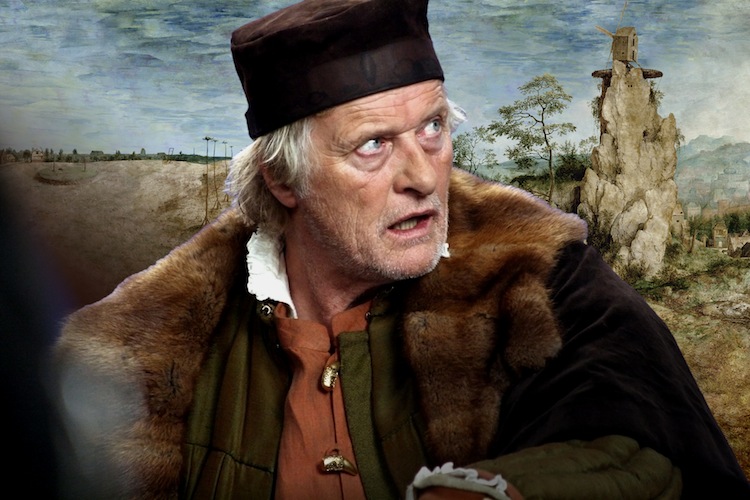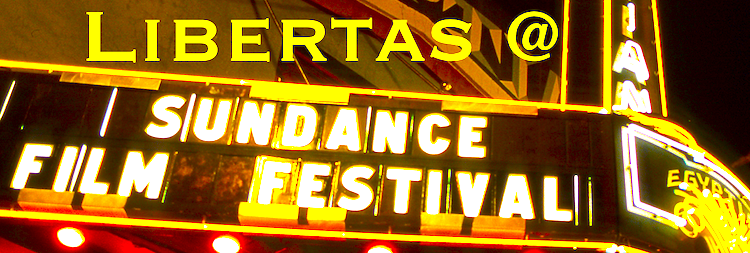By Joe Bendel. Pieter Bruegel the Elder was a truly subversive old master. Known for his paintings of the Dutch peasantry as well as Biblical episodes, his five hundred character masterwork The Way to Cavalry depicted the Spanish Militia then occupying Flanders as the Roman soldiers crucifying Christ. While Bruegel’s commentary on the Spanish occupation is inescapable, the painting is rife with hidden signifiers, which the painter himself explains in Lech Majewski’s unclassifiable The Mill & the Cross, a painstakingly crafted cinematic recreation of The Way to Cavalry, which had its world premiere at the 2011 Sundance Film Festival.
Employing state-of-the-art computer generation, scores of seamstresses and artisans, and an enormous 2D background recreation of Bruegel’s celebrated work painted by the director himself, Majewski brings the great tableaux to life on the big screen. Amongst those five hundred characters are Brueghel and his friend a collector, Nicholas Jonghelinck, to whom he explains his projected new painting, The Way to Cavalry.

It is impossible to hang a pat label on Mill. Though it screened as part of Sundance’s New Frontier track for more experimental work, such a rubric really does not fit Majewski’s film. It certainly is not non-narrative filmmaking, since it encompasses the greatest story ever told. However, it completely challenges linear notions of time, incorporating Christ’s Passion and the world of 1564 Flanders, in which Bruegel and Jongelinck are simultaneous observers and active participants.
Years in the making, Mill is an extraordinarily ambitious undertaking. Majewski represents the social continuum of Sixteenth Century Flanders, recreating the mean living conditions of the peasants, the clean, unadorned quarters of the relatively middle class Bruegel, and the privileged environment of the well-to-do Jongelinck. Majewski’s visuals are often arresting, like the scenes of art director Stanislaw Porczyk’s towering mill, which resembles the enormous set pieces of Terry Gilliam films. Perhaps most stunning are the wide shots of the Cavalry landscape, with the figures literally coming alive on Bruegel’s canvas. Yet, Majewski also captures moments of both tender intimacy and graphic torture, rendered with powerful immediacy.
Indeed, the wealthy collector clearly serves as the conscience of the film, decrying the capricious religious persecution that was a fact of life for Flanders under the Militia. Despite the almost overwhelming visual sweep of the film, Michael York gives a finely tuned performance as Jongelinck that really sneaks up on viewers. Rutger Hauer (worlds away from his other Sundance film Hobo with a Shotgun) also brings a forceful heft to the rather mysterious artist.
A personal triumph for Majewski, who also served as producer, co-cinematographer, co-composer, and sound designer, Mill effectively blurs the distinction between film and painting, yet it is more of a “movie” than nearly anything ever deemed “experimental film.” A unique, highly recommended viewing experience, Mill had its European premiere at the Rotterdam Film Festival yesterday (1/30) and will have its French premiere at the Louvre on Wednesday (2/2). There are worse reasons to travel to Europe on short notice. Indeed, it was one of the standouts at this year’s Sundance, which concluded yesterday (1/30) with the festival awards ceremony.
Posted on January 31st, 2011 at 9:37am.

2 thoughts on “LFM Sundance Review: The Mill and the Cross”
Comments are closed.